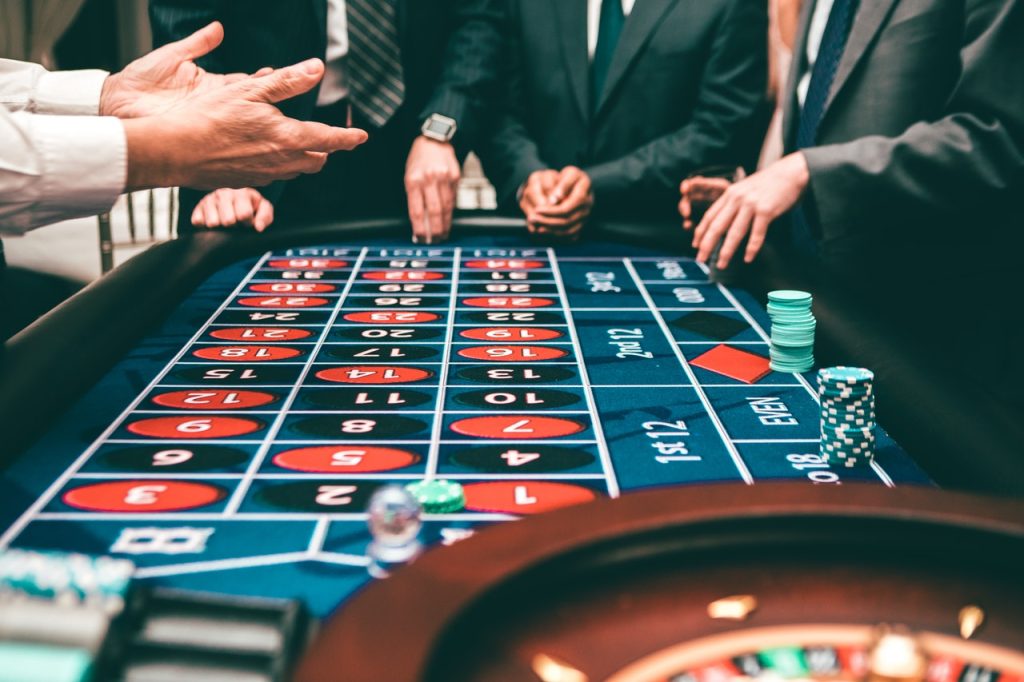Gambling has a variety of faces. On the one hand, it may be a pleasant sort of leisure, but on the other hand, it might develop into an addiction. Some individuals can enjoy gambling in a casual and healthy manner, while others may get addicted and be unable to stop.
We look at the addictive nature of gambling, what causes it to develop, and why some individuals are more susceptible to it than others in this post.
Why does gambling sometimes lead to dependency, while for others it is a fun pastime? This may be in part explained by the fact that individuals have varied experiences with gambling. Dr. Robert L. Custer, one of the founders of pathological gambling therapy, identified six sorts of gamblers.
- Professional gamblers
- Personality gamblers
- Casual social gamblers
- Serious social gamblers
- Escape gamblers
- Compulsive gamblers
Note: Problem gambling has been reclassified as an addiction rather of a compulsive behavior since Custer’s writings in the 1980s. Nonetheless, Custer’s problem gambler classification is still quite relevant today.
The reasons for participating in gambling are various, and each group has its own motivation that affects whether or not someone develops a gambling addiction.
Professional gamblers
For professional gamblers, gambling is not a pastime; it is a job as well as their main source of income. Gambling is a profession for these individuals, as well as an important part of their revenue stream. Because these games are designed to favor the casino and give it an edge, players that professionally exploit casino bonuses or count cards in blackjack are uncommon in online casino games against the house. However, players who professionally abuse casino bonuses or count cards in blackjack may be considered a distinct subcategory of professional gambler.
Note: A professional gambler is someone who plays for a living. A professional poker player is the most frequent example of a professional gambler. Because players compete against each other rather than the house, it’s feasible to make money playing poker. Nonetheless, becoming a consistently profitable poker player takes dedication and time.
Gamblers who are skilled have little chance of becoming addicted. They gamble in a methodical and systematic approach, with a well-defined strategy and plan. Their motives for gambling are also distinct from those of the typical gambler.
Antisocial/personality gamblers
Antisocial/personality gamblers, like professional gamblers, see gambling as a source of income. In contrast to their professional counterparts, these gamblers are more likely to employ unlawful methods in order to profit. These gamers seek for methods that will give them an edge over the house and aren’t scared to break the law if need be. They utilize techniques such as match fixing in sports betting, using marked cards in table games, and so on.
Gamblers who are fueled by their personalities rarely acquire gambling addictions. However, if their illegal activities put them in a dangerous situation, they may use gambling addiction as an excuse.
Casual social gamblers
Casual gamblers, on the other hand, see it as a form of entertainment. They frequently join their friends in gambling-related activities, utilize gambling to socialize, relax themselves from their daily routine, and so on.
In the case of this sort of player, gambling has little negative impact. Their personal and professional lives are not significantly impacted by their hobby. Casual social gamblers have a healthy and balanced attitude towards gaming in comparison to other sorts of gamblers.
Serious social gamblers
Serious social gamblers are comparable to their less serious “non-serious” counterparts, but they are far more committed. Gambling is one of the most widespread forms of entertainment and one of the most popular ways for serious social gamblers to spend their leisure time. However, family, friends, or work come above it on the list. They have the ability to change how often they gamble.
Relief and escape gamblers
Relief and escape gamblers use gaming to block out the badness of their lives, while casual and serious social gamblers play to amuse themselves. This might be anything, including feelings of ennui, loneliness, rage, or despair. If a player’s mental health deteriorates but they have no constructive way to address these unpleasant ideas and sentiments, their gambling behavior is likely to grow as well. In the worst-case scenario, they could become addicted.
Compulsive gamblers
Compulsive gamblers (also referred to as problem gamblers or gambling addicts) no longer have any control over their gambling habits. Gambling is the most significant activity in their lives, and they are prepared to pay any price and make any sacrifice to play even more. They are negatively impacted by gaming.
In the sections that follow, we’ll go through the stages of gambling addiction in detail. We’ll also discuss compulsive gamblers, problem gamblers, and gambling addicts.
Is it just about the money?
In conclusion, no, it isn’t. Some researchers have claimed that money might be the driving force behind a problem gambler’s addiction. After some time had passed, studies revealed that this wasn’t the case at all. And the belief that addicted persons are fixated on a vision of great wealth and luxury is not only incorrect, but can also exacerbate their problems.
This is not to suggest that money isn’t essential in the life of someone with gambling addiction, but it isn’t the root cause. In the sections that follow, we look at biological and psychological causes of gambling addiction.
The financial cycle of a problem gambler
Before we get into how problematic gambling patterns affect financial success, let’s take a look at how gambling addiction affects personal finance. Dr. Henry Lesieur developed the following widely accepted financial cycle for a problem gambler. If you recognize any of the traits listed below in yourself, read our article on problem gambling diagnosis and symptoms to ensure that you are not starting any potentially hazardous habits.
It’s worth noting that this financial cycle is called a “cycle” for a reason. It can also be interpreted as a spiral that repeats itself indefinitely, with each iteration placing the victim into increasingly difficult lives until they reach rock bottom. However, if it isn’t addressed in a timely and appropriate manner, it may result in the inability to gamble because to loss of disposable income or worse still, death.
The availability of money as a gambling facilitator
In the beginning, the player has enough cash to gamble as much as they want. At this time, their wagers are at their greatest. This is especially hazardous for individuals who have developed a “resistance” to lower bets and can no longer get the same thrill from them. A severe case of gambling addiction can quickly consume the majority of a person’s monthly disposable income in days, sometimes even hours, while chasing a “high.”
Lack of money as a gambling facilitator
The problem gambler eventually runs out of money, even if they are not yet bankrupt. Anxiety, regret, and melancholy are all common at this stage of the cycle. At this period in the cycle, players who are addicted may feel compelled to reclaim what they have lost. In the case of addicted gamers, pursuing losses might seem like a requirement rather than an option; but it’s very unlikely to succeed in their favor and frequently results in greater money being lost.
Lack of finances as a source of debt and existential distress
When the addicted player has used up all of his or her money, this phase of the cycle begins. Feelings of worry and sadness naturally lead to great desperation and sometimes even depression. The gambler might be able to quit completely for a brief period depending on the severity of his or her addiction and willpower. However, as really severe problem gamblers may even experience withdrawal symptoms when not gaming as if they were drug addicts, quitting might get increasingly difficult.
The game loops and restarts when the player finds more cash. This money might come from a variety of places, with the least harmful being their salary and in order of increasing concern, borrowing from family, friends, banks, loan sharks, or by engaging in unlawful behavior.
What causes and perpetuates gambling addiction?
When it comes to addictions, it’s vital to remember that they aren’t always triggered by a single thing. They’re the result of a complex web of causes including interrelated conditions that produce compulsive actions. Origin may be separated into the following groups: biological, psychological, social, and spiritual influences. The Bio-Psycho-Social-Spiritual Model of Addiction is another name for this idea.
We’ll concentrate on the first two types of factors for gaming addiction: biological and psychological. These are backed by facts and may be blamed for the most part of problem gambling situations. We aim to shatter long-standing misperceptions by revealing some of the underlying ideas behind this illness.
Biological factors
Some have defined addiction as a “chronic disease of the brain.” This definition, while accurate, is too simple. It may also appear to a problem gambler that they are powerless to stop their addiction since they are “ill.” Of course, this is completely untrue. However, this definition does an excellent job of providing us with several fascinating insights.
The first step in addiction recovery is to recognize that approximately 50% of addiction is due to personal biology. Second, the notion that individuals become addicted to things and activities isn’t entirely accurate. In fact, they become addicted to the chemicals produced by their brains in response to external stimuli. Third, people with healthy brains are more likely to acquire an addiction. People’s brains are “programmed” to encourage them to repeat enjoyable activities and experiences, according To psychologists and biologists, these behaviors are known as “motivated behaviors.”
However, the brain may adapt to new inputs and start treating them as highly significant, if not more so than, previously introduced stimuli. This is how one’s body becomes addicted. The addiction influences the brain in two ways: gradually increasing its power over us, and even producing structural modifications in it. There are six primary offenders at work in this process.
Three parts of the brain:
- Cerebral Cortex
- Amygdala
- Hypothalamus
Three chemicals in the brain:
- Serotonin
- Dopamine
- Norepinephrine
Cerebral Cortex
The cerebral cortex is the area of the brain that controls our ability to make sound judgments. It inhibits us from making decisions or acting on impulse by causing detrimental changes in the cerebral cortex. These changes prevent us from making good, healthy choices, which can lead to addiction.
Amygdala
The amygdala is linked to memories and emotions. Memories and emotions are stored in the brain via connections between them. A player who gambles every Wednesday after work, for example, and then goes out to dine at their favorite restaurant, establishes a habit through these associations.
However, if that player decides to quit gambling and continues to perform the same regimen without it, they will experience withdrawal symptoms as the brain expects a surge of euphoric sensations. This is why if you continue to gamble despite your intentions, it is possible to relapse.
The Hypothalamus
The hypothalamus is closely linked to the ability to cope with stress. Many problem gamblers and non-problem gamblers use gambling as a coping mechanism, both of which utilize it as a means to escape stressful situations. Unfortunately, addiction lowers the ability to appropriately manage stress. This results in a vicious cycle in which an addicted player seeks more gambling to manage his or her stress levels. Overindulgence in gaming often leads players into difficult circumstances, adding to their burden. However, if gambling habits are broken off, subsequent withdrawals result in even greater distress.
Serotonin
Serotonin is the chemical that makes people genuinely happy. Dopamine, in contrast, is considered to be a false “happy” substance. Low levels of serotonin can lead to sadness and even depression. People who are addicted seem to experience mood swings more frequently than others. Serotonin has been linked to motivation and motivated behaviors (such as eating and drinking) in humans. Problem gamblers have been shown to have lower amounts of serotonin and disrupted flows, which can lead to difficulties with goal-directed behavior (e.g., missing supper so you may gamble longer).
It’s fascinating to note that serotonin has also been strongly associated with “chasing losses,” a behavior that may be observed across the world in every gambling form. It appears that serotonin and dopamine decrease player sensitivity to the “turn-off” of losing. After a sequence of losses, most people would abandon their endeavors. A gambler who has become desensitized to the unpleasant emotions connected with losing money, on the other hand, will continue searching for much longer.
Dopamine
Dopamine is inextricably linked to the amygdala portion of the brain’s functions. Dopamine is not, as many people believe, a “happy chemical,” but rather it controls our brain’s reward systems. When you do something deemed beneficial, such as exercise or eat healthily, your body releases dopamine. This flood of chemicals produces a sense of euphoria that compels people to repeat the act, which is why recreational and problem gamblers alike had higher levels of dopamine than normal while gambling.
Note: Dopamine is an important neurotransmitter in the context of addictions. People with Parkinson’s disease, which is linked to malfunctioning dopamine systems, are more likely to become addicted than anyone else. The significance of dopamine continues to be investigated.
Noradrenaline
Norepinephrine is a chemical that prepares and motivates the body and brain for action. It raises alertness and arousal, encourages vigilance, aids in the storage and recall of memories, and causes restlessness and stress. Naturally, in dangerous situations when the fight-or-flight response is activated, the highest amounts are seen.
Both problem gamblers and non-problem gamblers appear to have more norepinephrine while gambling. This might be why so many people become completely absorbed and lost while playing. Furthermore, the chemical has been linked to relapse, reward sensitization (whereby a person becomes increasingly interested in the same thing), attention and sensation seeking.
Psychological factors
The Bio-Psycho-Social-Spiritual Model of Addiction, as previously stated, is a complex system of interrelated elements known as the Bio-Psycho-Social-Spiritual Model of Addiction. But this subject goes even further down the rabbit hole. Each element has its own divisions and methods. This also pertains to addiction’s psychological aspects.
The search for a single psychological approach that explains gambling addiction has proved fruitless. The most popular and accepted theory is an “integrated model” put forth by addiction counselors Blaszczynski and Nower.
The integrated model takes into account all of the applicable facts from various psychological theories (learning, cognitive, addiction, personality, and psychoanalytic) and connects the dots between them to build a comprehensive theory of the topic. In this instance, Blazczynski and Nower divide problem gamblers into three distinct groups based on the potential cause for their addiction:
- Emotionally vulnerable gamblers
- Behaviorally conditioned gamblers
- Biologically based gamblers
The argument that all problem gamblers experience similar symptoms of harmful behaviors is correct, but the main source of these tendencies is extremely distinct. Researchers, on the other hand, stress that many aspects, such as environmental variables, the central importance of player arousal, conditioning (learning processes that cause a person to react to something in a certain way), and cognitive biases (illusions) appear in each group.
Emotionally vulnerable gamblers
Gamblers who are emotionally vulnerable gamble for escapism and to forget about their problems. This sort of compulsive gambler is frequently emotionally disturbed, has poor coping abilities, is socially withdrawn, and has a low self-esteem. Counselling and treatment of underlying emotional trauma are the greatest ways to assist them.
Behaviorally conditioned gamblers
A person who suffers from this type of gambling disorder is caught up in their obsessions and routines. They are highly susceptible to environmental stimuli, and they frequently go through the same series of actions. Consultations with knowledgeable experts are usually the most successful approach to get them out of these behavioral cycles.
Biologically-based gamblers
These individuals are slaves to their biological wiring. Genetic and neurochemical causes lead to a near-constant need for stimulation and impulsive behaviors. Medication, in addition to therapy, can aid gamblers in regaining control of their own actions by helping them make independent decisions.
How game design contributes to gambling addiction
In general, casinos have a precisely defined objective. The aim of all land-based and online casinos is to encourage gamblers to keep playing and spending money. Gamblers who leave with a positive feeling want to play it again ideally. This is known as “increasing the amount of bets made by a player in a given time.”
A land-based casino has an inherent advantage over its online counterpart. The casino can influence players through personnel, layout, and décor in a way that it cannot do so when they are not physically present. Online casinos, on the other hand, employ unique methods to get into your head.
Let’s have a peek at the many ways game developers entice us to part with our hard-earned money.
Tokenization
When you trade currency for something else that represents it, as in tokenization, you’re reducing the amount of money required to make a transaction. Consider a typical poker chip. This method is popular among online and real-world casinos since it creates a mental distance in terms of recognizing the chip’s actual worth. This makes betting and spending your chips less stressful because you don’t have to think about how much money you are really spending.
Gamification
Gamification, as the name implies, is a form of game-inspired motivation. Gamification methods have a variety of shapes and forms. Some online casinos use leaderboards to encourage players to compete for the top places, take bigger risks, and play even more often. Other techniques include games that are more skill-based designed to create the sensation of being an expert so that players will feel better about themselves.
There are also various kinds of gamification methods that aren’t commonly used outside of social casinos. For example, delaying the replenishment of chips for no reason, or giving a tiny fee to play immediately after paying money.
Easy access to different gaming opportunities
The idea is basic. A player should have simple access to a variety of games and game types without having to leave the site or tab. People become naturally at ease, to the point where even a minor annoyance like clicking on another page makes them less inclined to continue playing.
Reward uncertainty
Variable Intermittent Ratio Uncertainty is a psychological technique used to create suspense in people. B.F. Skinner (the renowned inventor of the Skinner Box, which he compared to a slot machine) developed it based on his theories. People are more emotional when they are unsure whether or not they will win, according to his studies. Only after seeing the conclusion does waiting for a result build tension, which is then released.
On the other side, the gambling business recognized that frequent near misses and modest victories might encourage gamblers to play more and faster. Someone who feels extremely close to that “big win” is far less likely to cease playing.
Losses disguised as wins
Losses disguised as wins are most common in slot machines with a large number of winlines or methods to win. Many slots have 25, 50, or even millions of win lines, making it more probable to obtain a “winning” combination.
The logic behind this idea is that you will win more frequently because there are more opportunities to do so. Of course, players want to win every time they play. As a result, you wager larger amounts of money and continue betting because you believe you’re making money. However, the wins you obtain on these machines are generally lower than the bets you actually make. The casino continues taking all of your money despite the fact that it does so gradually without you realizing it.
Audio-visual positive reinforcement
For as long as most of us can remember, bright brilliant lights and loud sharp sounds have been a part of gambling. However, not many people are aware that they are meant to keep your attention once you’ve noticed them.
The amount of planning that goes into developing an effective audio-visual experience is remarkable. The sound must be loud enough to cover up external noises without being too distracting. It has to correspond to what’s going on in front of you. This gives players the impression that their actions make a difference and that they have some control over the game. On-screen visuals are also important. They must be bright and interesting, yet not so intense as to interfere with gameplay. Something simply for your enjoyment…
Zone-inducing features
When it comes to what causes and perpetuates gambling addiction, we said that addiction is frequently a coping strategy gone wrong when used to flee uncomfortable feelings. “The Zone,” originally introduced by scientist Natasha Schull, is crucial to comprehending this behavior.
The “Zone” is a state of mind in which a player becomes absorbed in the game to the point that they lose track of time. They may spend hours immersed until something interrupts them and pulls them out of their “trance.”
Sound effects and visual elements are two main components that lead gamblers into the Zone. However, there is a third factor to consider while developing games to zone out to. The speed of play is the most essential component. Players get bored if gameplay is too slow, and they become irritated if it’s too quick. Game designers have therefore started designing their games with the intention of meeting players’ preferences in mind.
While there are certain advantages to using auto-play, there is also one that makes these concerns obsolete. Auto-play is nothing new in the world of gambling. It has become commonplace in the gambling industry and no one bats an eyelid at it any more. What people don’t realize is that it can be quite hazardous under specific circumstances. You do not have to play after pressing auto-play; rather, the game proceeds automatically and you may not even realize how much time you’ve spent playing or how much money you’ve spent until the game is over.
Final Thought
Gambling addiction is a lot more difficult than most people believe. Its mix of biological and psychological causes makes it an adversary that’s tough to battle against. If you or someone you care about is at risk of becoming addicted, we highly recommend reading our post on problem gambling symptoms and diagnosis. Please suggest our article on how to overcome problem gambling, as well as our list of problem gaming help centers, if you know of anyone who is already dealing with problematic gambling tendencies.










